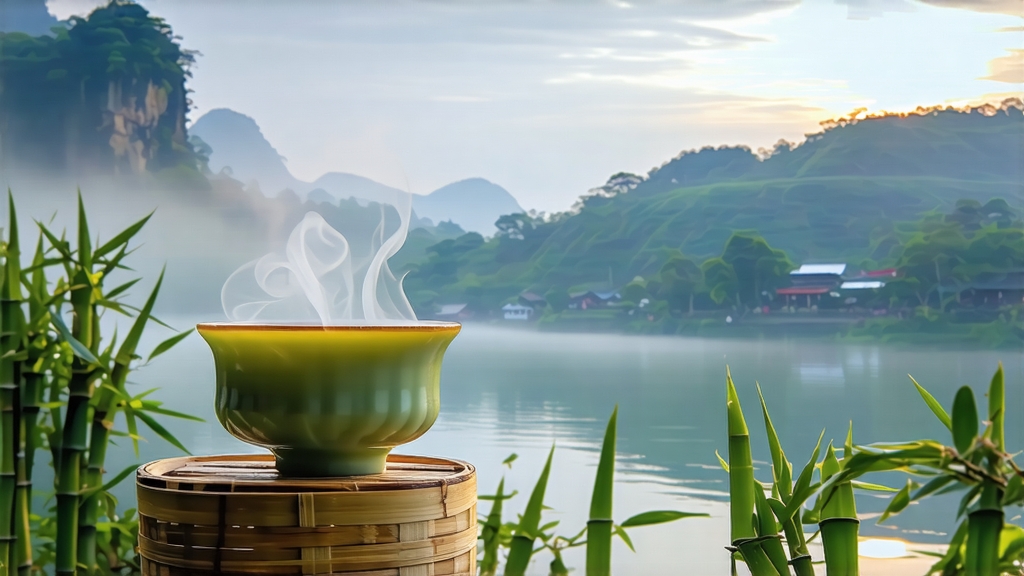
Longjing—romanised as Lung-ching, literally “Dragon-Well”—is the single green tea most Chinese would save if every other leaf vanished. It is not merely a beverage; it is a landscape pressed into a leaf, a Ming-dynasty poem you can taste, a social ritual that once graced the imperial court and now cools the throats of Hangzhou taxi drivers. To understand China’s green-tea universe, start here, beside the willow-lined banks of West Lake, where the mist rises like silk and the air smells of young lotus and wet stone.
History: From Imperial Tribute to Global Icon
The first credible mention appears in the Tang-era Classic of Tea (c. 760 CE), but Longjing’s fame crystallised during the early Qing. The Kangxi Emperor, touring the south, was served an infusion so fragrant that he pocketed a handful of leaves and later planted them in the palace garden. His grandson Qianlong went further: in 1751 he bestowed the 18 imperial tea bushes in front of Hugong Temple with aristocratic status; those same bushes still draw selfie-snapping pilgrims. By the late 19th century Hangzhou merchants shipped Dragon-Well to San Francisco and London, wrapping it in tin-foil and blue-and-white paper stamped with a golden dragon. Today it tops China’s “Ten Famous Teas” list and is gifted to presidents while also filling plastic bottles in Beijing 7-Elevens—an extraordinary arc from sacred grove to mass commodity.
Terroir: Why West Lake Matters
Chinese connoisseurs speak of “authentic view” (zhengshan): tea grown within the protected Xihu (West Lake) micro-zone. The lake acts as a thermal battery, moderating temperature and bathing the hills in reflective light. Granitic soils drain quickly yet hold just enough moisture; the surrounding osmanthus and peach trees contribute volatile esters that drift onto leaf surfaces. Within Xihu, the minuscule 700-hectare core—Shifeng, Meijiawu, Wengjiashan, Longjing village itself—yields the most sought-after leaves. Move ten kilometres west and the chemistry changes: the same cultivar produces a flatter aroma and less amino-sweet finish. Thus every serious label carries a tiny 18-digit traceability code verified by the Hangzhou Agricultural Bureau.
Cultivars: Beyond the Generic “Longjing”
Most drinkers assume Longjing is one tea; in reality it is a stylistic umbrella sheltering several cultivars. The traditional clone is Qunti (literally “population seed”), a seed-propagated mix of local bushes giving small, pale leaves and a haunting orchid note. In the 1980s researchers released Longjing #43, a vegetative clone prized for early budding—often harvestable by Qingming festival—and its bright jade colour, though it can edge toward grassy if over-fired. A newer entrant, Zhongcha 102, offers higher yield and frost resistance but lacks the bean-like sweetness of its predecessors. Purists insist on Qunti for complexity, while commercial gardens favour #43 for predictability. When buying, check the pluck standard: only single bud plus one unfolded leaf (qiyapian) qualifies for top grade.
Harvest Calendar: Racing the Spring
The entire annual romance lasts barely six weeks. First flush, called Mingqian (before Qingming, 4 April), accounts for less than 10 % of production; cool nights concentrate theanine, yielding a creamy broth and negligible bitterness. The following three weeks, Yuqian (before Grain Rain, 20 April), still deliver excellence but with a slightly sharper edge. After that the market moves to cheaper “level three” summer teas whose leaves broaden, lignify, and surrender briskness for astringency. Experienced pickers work with thumbnail precision, avoiding the purple buds that signal anthocyanin overload. A seasoned veteran can collect 1 kg of fresh leaf in four hours—enough, once fired, for a mere 200 g of finished tea.
Craft: The Art of Pan-Firing
Longjing is the only famous Chinese green tea shaped entirely in a hot wok, a technique immortalised on the 2016 G20 summit commemorative stamp. Fresh leaf is first “kill-green” (shaqing) at 180 °C, deactivating polyphenol oxidase within two minutes. The temperature